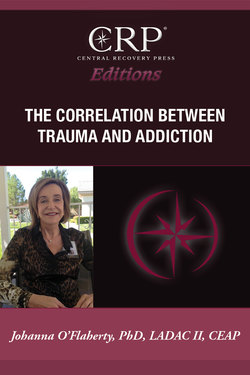Читать книгу The Correlation Between Trauma and Addiction - Johanna O'Flaherty - Страница 6
На сайте Литреса книга снята с продажи.
ОглавлениеThe Nature of Trauma and Co-Occurring Addiction
When people are traumatized, they are overpowered. They do not give their power away; it is taken from them. At the moment of trauma, the individual is rendered helpless by overwhelming force. Trauma is an event or a series of events that overwhelms our natural coping abilities. We all have different coping abilities, and that’s why no two individuals will react exactly the same way to trauma.
However, events which are by definition traumatic, because they are so big and so devastating, leave their mark on all of us. No doubt you are familiar with the idea that a picture is worth a thousand words. Everyone knows precisely where they were, what they were doing, and who they were with when they heard about the terrorist attacks on the World Trade Center and the Pentagon on September 11, 2001. We call these “flashbulb memories.” These are memories so powerful that they are effectively imprinted into our psyche.
I first became interested in the correlation between trauma and addiction many years ago. Correlation does not mean causation. Trauma does not necessarily cause addiction and addiction does not cause trauma per se, but they frequently co-occur and they often contribute substantially to one another. Correlation in this context means association. All around the country, a very high percentage of the patients who come in for addiction treatment have experienced trauma.
It’s essential for treatment professionals to understand that a traumatized individual does not respond to stress the way somebody who has not been traumatized responds. The following is a brief case scenario that describes how trauma and addiction are typically linked together.
A twenty-eight year-old woman is admitted to your inpatient program with an extensive history of addiction. She was incested by her father from age four to age eleven, and began using alcohol and other drugs at age twelve. Subsequently, she became a sex worker (specifically, a prostitute), and was serially abused by her various pimps and numerous johns, prior to entering treatment.
You only have fifteen days for treatment and thirty days total to work with her, if you are fortunate. What do you do?
In the traditional twelve-step-oriented philosophy of many addiction treatment programs, the message is, “Don’t drink/don’t use, go to meetings, and use the steps.” That in and of itself is essential because before we can effect any real treatment, we need the individual to be abstinent, stable, and have some sort of a foundation. However, when trauma is involved, that advice is nowhere near enough. For those with trauma, alcohol and other drug use can become a survival strategy. Obviously, it’s a strategy that doesn’t work in the long-run, but alcohol and other drugs help numb the distress, the anxiety, the depression, and the fear precipitated by trauma.
For many years, when patients presented with trauma to addiction treatment professionals, we would say, “Now is not the time to deal with the trauma. Keep it on the shelf until the patient’s abstinence is stable.” As a young therapist I would confer with my preeminent psychiatrist and psychologist colleagues and say, “Doc, that’s fine with me, but tell me, what shelf? Where is this shelf?” Meanwhile, intense trauma-based emotions are spilling out for patients who are no longer self-medicating. So, how do we work with trauma when we take away the patient’s primary coping method, when abstinence/recovery expose the pain connected with it?
My philosophy is that as clinicians, we do not seek to explore trauma with clients who are newly abstinent. Nevertheless, when the patient brings trauma to us—meaning, to the treatment environment—we need to acknowledge it and help the patient contain it. To use a Native American metaphor, we don’t rush the river. But, when the river starts flowing, we need to be able to contain it.
In terms of trauma, the patient’s trauma-driven emotions are the river. My experience in this field for over twenty-five years suggests that the majority of people admitted for addiction treatment, 80 to 90 percent in the case of women, have experienced trauma. It’s also true that a high percentage of men have been abused. In early recovery, we do not go looking for trauma with the patient. The patient brings the trauma to the therapist. When the patient brings the trauma to the treatment setting, as professionals we are obligated to deal with it and be able to contain it.
It is also helpful to be aware of the link between addiction and trauma from a multi-generational perspective. My framework for understanding multi- or intergenerational trauma is this: That which is not transformed is transmitted. Specifically, trauma that is not transformed or healed well enough within one generation will be transmitted to the next generation. For instance, often you have a patient in your practice with addiction and over-reactive/aggressive behaviors whose parents and grandparents were substance abusers and were also abusive. These previous generations never transformed their own issues and therefore transmitted those issues intact to the next generation.
Multigenerational trauma can manifest itself in different ways, so allow me to provide another example.
Your maternal grandfather is a raging alcoholic, so your mother decided she would never drink, and perhaps she kept that commitment. In this case, active addiction was not transmitted to the next generation. However, if your mother does not engage in the work necessary to transform the dysfunctional thinking, distorted beliefs, and unhealthy ways of dealing with emotions that go along with growing up in an addicted family system, all these are passed on to the next generation. That which is not transformed is transmitted.
